Nordic Art Meanings, Styles, and Symbolism
Nordic art has long captured the fascination of people around the world, not only for its bold, striking aesthetics but also for the rich cultural history it represents. The influence of Viking culture, Norse mythology, and runic symbolism continues to inspire contemporary tattoo enthusiasts. If you’re researching Nordic art for your next tattoo, you’ve likely already been captivated by the deep-rooted meanings, intricate designs, and symbolic power that these ancient motifs hold.
In this article, we’ll explore the history and elements of Nordic art, dive into some of the most popular symbols used in tattoos today, and offer insight into how you can choose the perfect design that resonates with your personal journey.
Take a look at my nordic tattoo gallery here.
Nordic Art History
Nordic art, often referred to as Viking art, is an umbrella term for the artistic traditions of the Scandinavian peoples during the early Middle Ages, roughly from 700 AD to 1100 AD. These people were seafarers, warriors, and traders, whose artistic expression was often tied to their religious beliefs and social structures.
Key Influences of Nordic Art:
• Norse Mythology: The Norse pantheon, with gods such as Odin, Thor, and Freyja, greatly influenced their art, along with the stories of creation, the nine realms, and Ragnarök.
• Runes: The ancient runic alphabets were more than just a form of communication—they carried magical significance, used in divination and rituals.
• Animal Art: Animals such as ravens, wolves, serpents, and dragons held powerful meanings in Nordic culture, representing strength, protection, wisdom, and transformation.
• Nature and the Cosmos: The Norse believed that their lives were interwoven with the natural world and the cosmos, symbolized by Yggdrasil, the great tree that connects all realms of existence.
Evolution of Nordic Art
Over the centuries, Nordic art evolved from simple geometric forms to highly detailed and complex designs, especially in the form of wood carvings, metalwork, and stone engravings. Viking ships, longhouses, weapons, and jewelry were adorned with these intricate patterns, and they have stood the test of time, influencing modern tattoo art.
Popular Nordic Symbols for Tattoos
When it comes to Nordic art tattoos, the appeal lies not just in their visual beauty but also in the deep symbolism each design holds. Let’s explore some of the most popular Nordic symbols and their meanings:
1. Runes
Runes are perhaps the most iconic symbols from Nordic culture. The Viking alphabet, known as the Elder Futhark, contains 24 runes, each with its own meaning. In addition to being a form of communication, runes were believed to carry magical powers, often inscribed on weapons and tools for protection and strength.
Popular runes for tattoos include:
• Fehu (ᚠ): Associated with wealth and abundance, both material and spiritual.
• Uruz (ᚢ): Represents strength, vitality, and good health.
• Algiz (ᛉ): Symbolizes protection, often used to guard against danger.
Many choose to combine runes in sequences to create personal meanings or represent specific intentions.
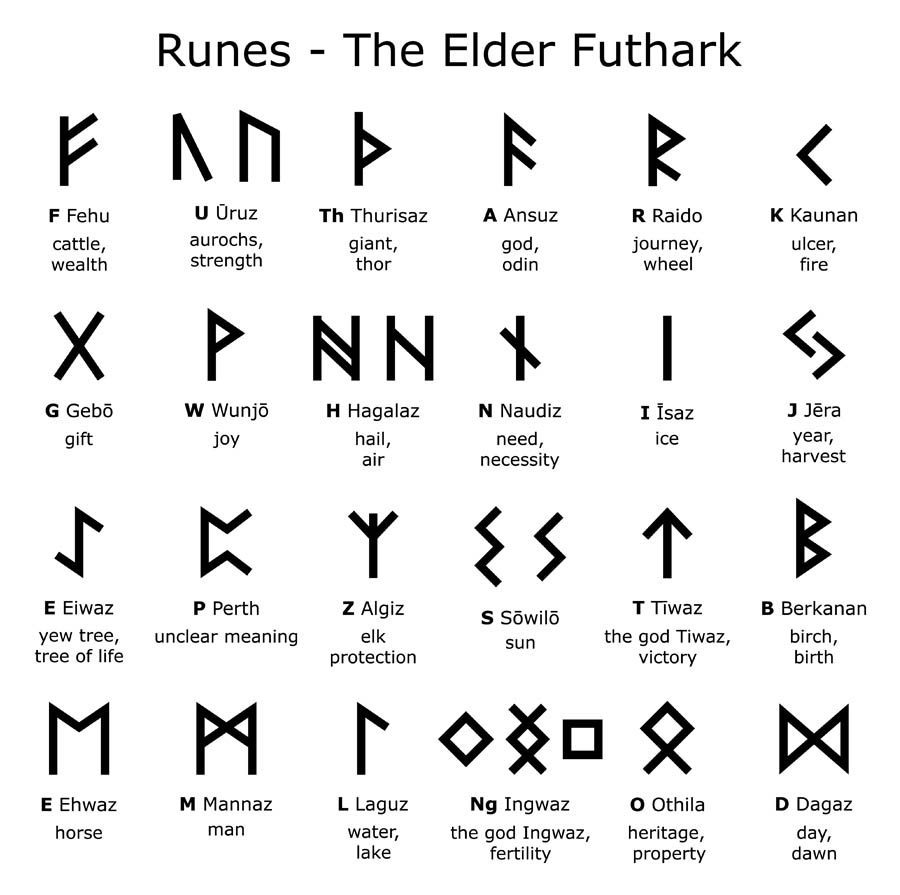
2. Yggdrasil (The Tree of Life)
In Norse mythology, Yggdrasil is a massive tree that connects the nine realms of existence. It’s a powerful symbol of interconnectedness, growth, wisdom, and endurance. A Yggdrasil tattoo often serves as a reminder of the wearer’s connection to the world, the universe, and their own journey through life.

3. Mjölnir (Thor’s Hammer)
Mjölnir is one of the most popular symbols in Nordic tattoos, representing the hammer of Thor, the god of thunder. It was used to protect both the gods and humans from giants and chaos. People who choose Mjölnir as a tattoo often do so to signify protection, strength, and the defense of one’s values.
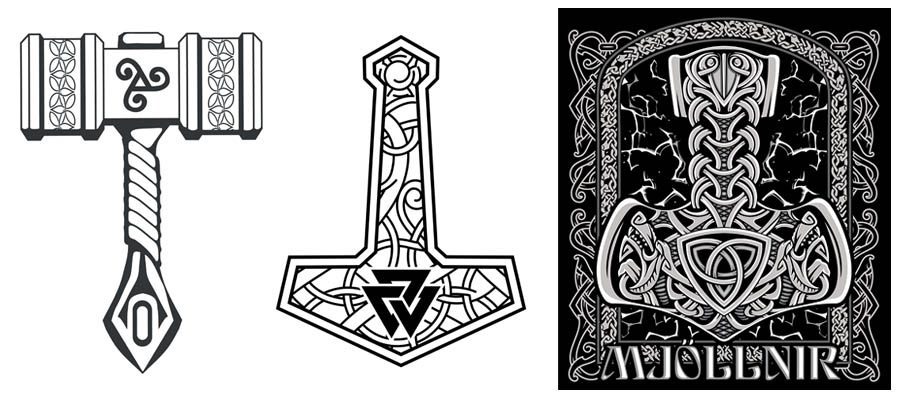
4. Valknut
The Valknut is a symbol consisting of three interlocking triangles and is often associated with Odin, the god of war and death. It is believed to represent the transition between life and death and is frequently associated with bravery and sacrifice. Many people choose this symbol to honor loved ones who have passed away or to embrace the cycle of life and death.

5. Nordic Animal Art
Animals play a prominent role in Nordic mythology, often serving as companions or symbols for gods and warriors. Each animal holds its own unique meaning:
• Raven: Symbolizes wisdom, foresight, and mystery, often connected to Odin.
• Wolf: Represents loyalty, family, and protection. The mythological wolves Sköll and Hati chase the sun and moon across the sky.
• Dragon: Dragons were seen as powerful creatures that represented destruction and rebirth, a symbol for transformation and resilience.
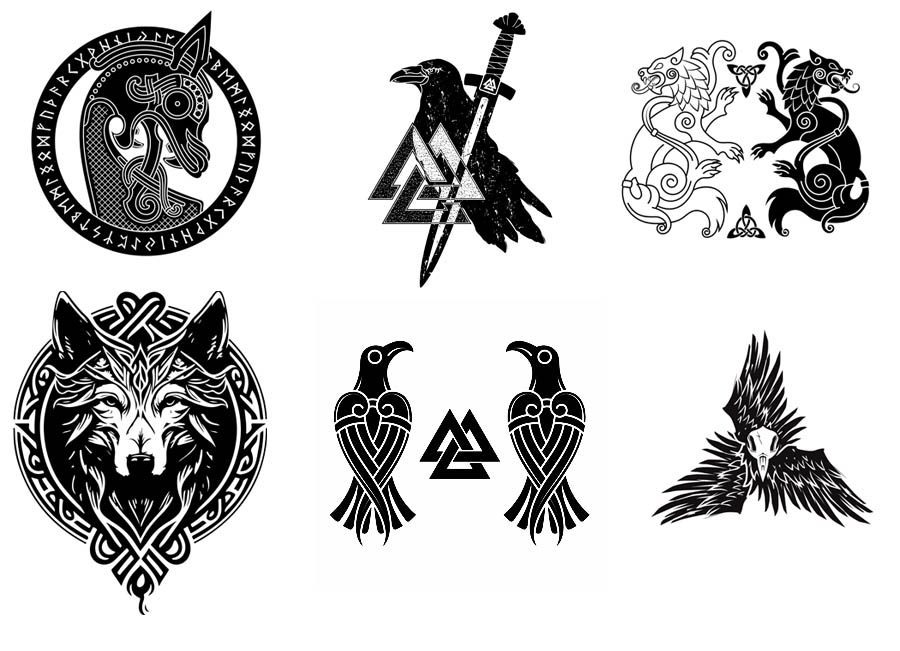
Artistic Styles of Nordic Tattoos
One of the most fascinating aspects of Nordic tattoos is the versatility of the designs. You can choose between traditional representations or more modern, artistic interpretations. Here are some popular styles:
1. Traditional Viking Style
Traditional Viking tattoos use bold lines and simple, geometric shapes. These designs are often very straightforward and minimalistic, with little shading or embellishment. This style is ideal for people who want to keep their tattoo grounded in historical accuracy and tradition.
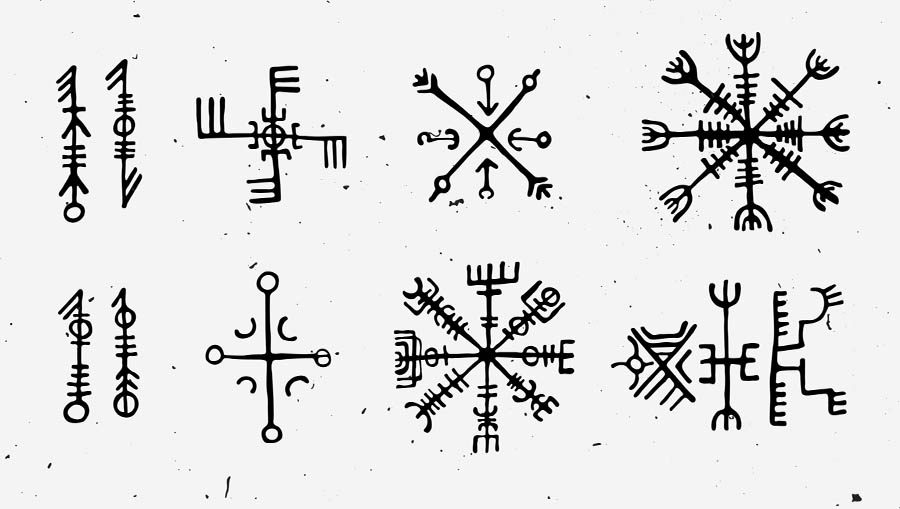
2. Modern Interpretations
In recent years, many tattoo artists have adapted Nordic designs into more contemporary styles. These modern interpretations often feature fine linework, geometric shapes, and artistic variations that blend Norse symbols with other design elements. These tattoos can range from highly detailed to abstract, depending on your preferences.
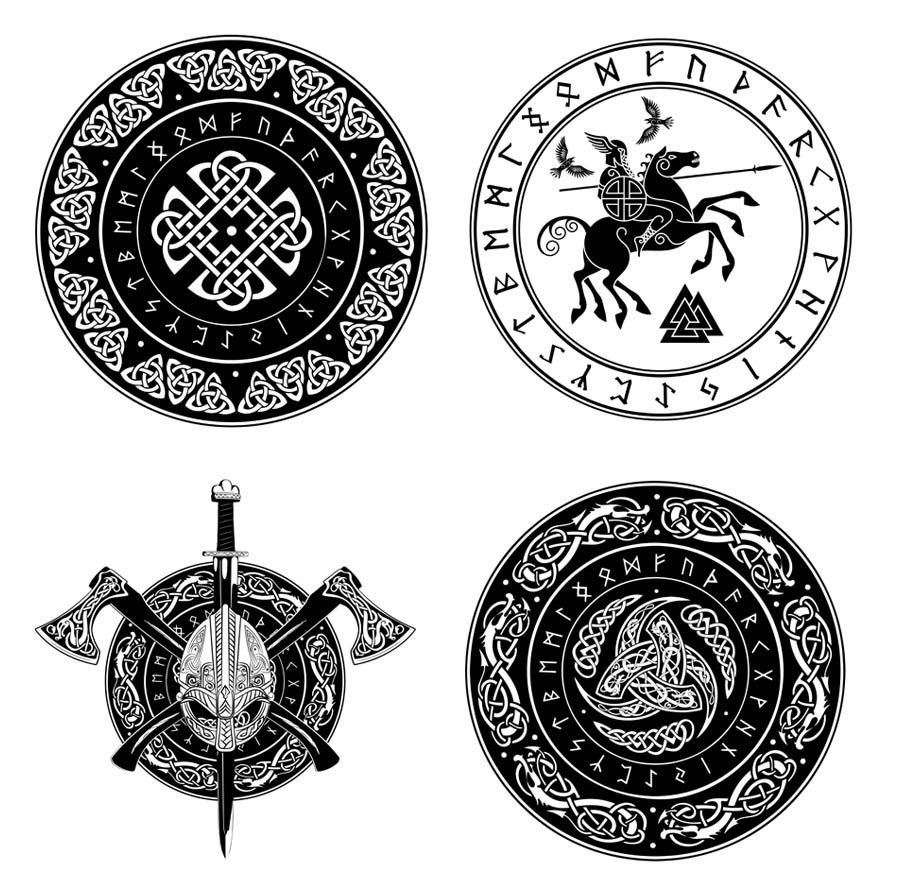
3. Dotwork and Blackwork
Dotwork and blackwork techniques are popular for creating intricate and detailed Nordic tattoos. Dotwork involves using tiny dots to form complex patterns and shading, giving the tattoo a more textured appearance. Blackwork tattoos focus on using solid black ink to create bold, striking designs. These styles are often used to create highly detailed Nordic patterns or symbolic scenes.
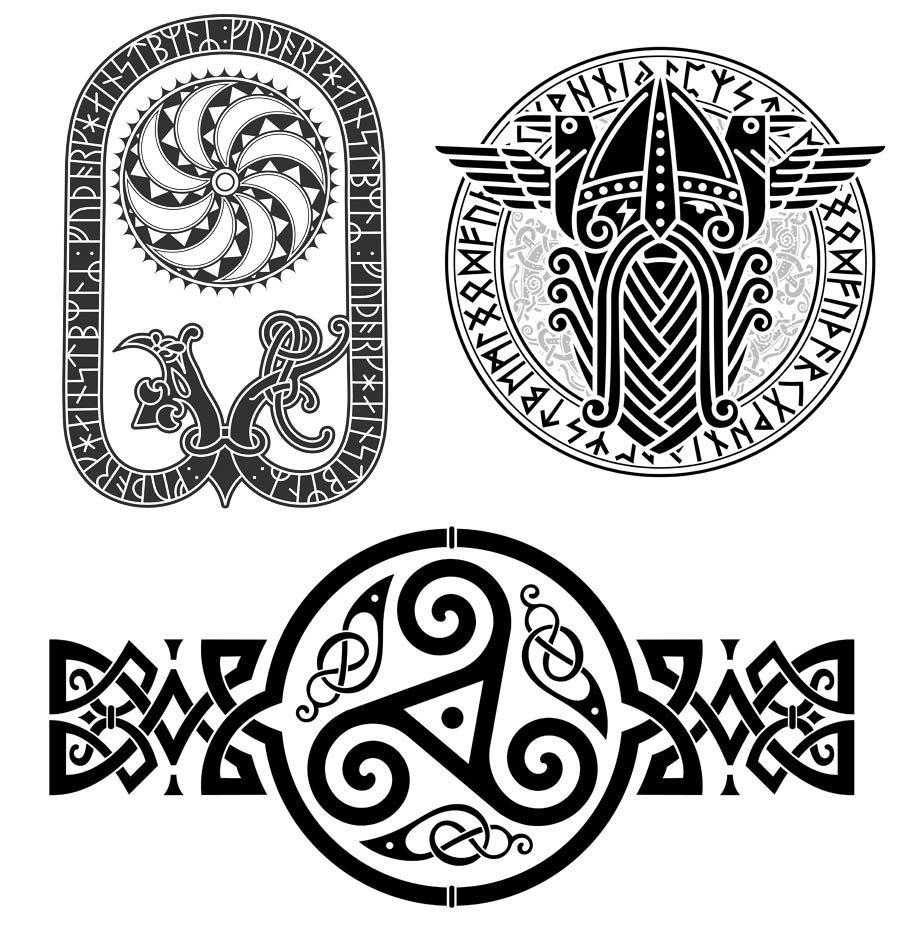
4. Mixing Nordic Art with Other Styles
Some people prefer to incorporate Nordic symbols into other tattoo styles, such as Japanese Irezumi, neo-traditional, or even watercolor. This allows for even more creative freedom and can result in a unique and highly personal tattoo that merges two different cultural traditions.
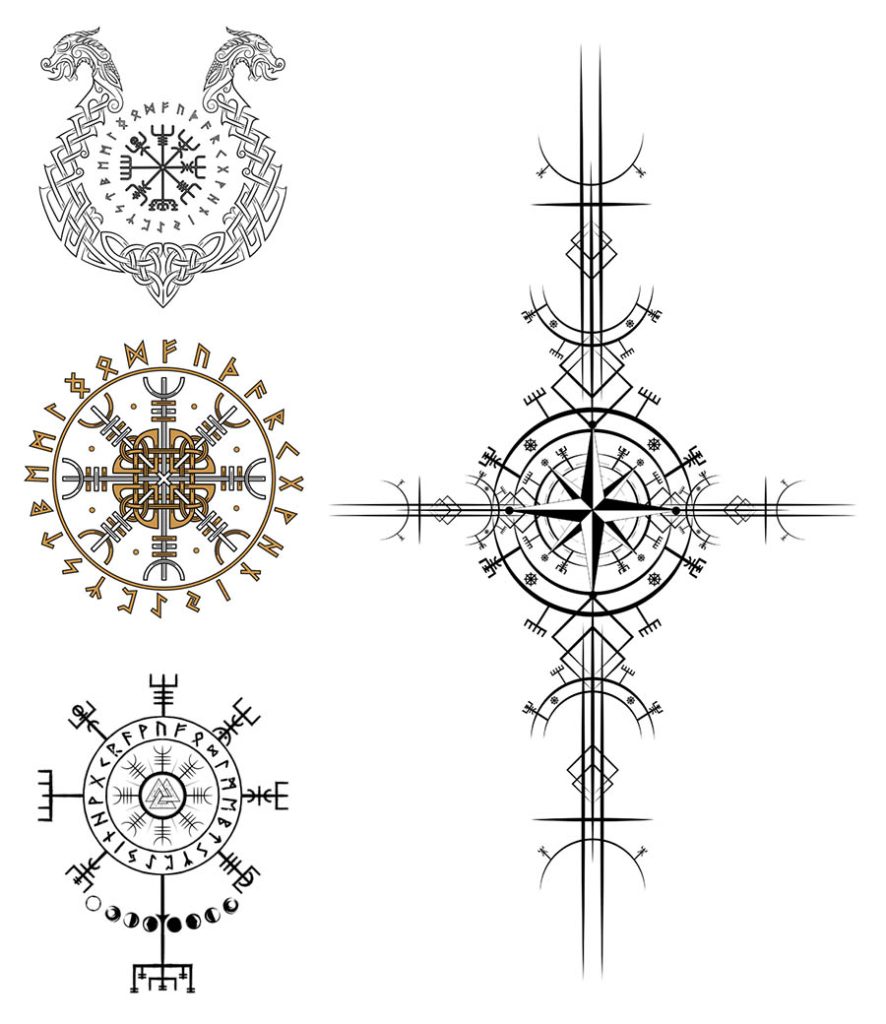
Choosing the Right Nordic Tattoo for You
Selecting a tattoo that you’ll carry with you for life is an intensely personal decision. When it comes to Nordic tattoos, there’s more to consider than just aesthetics. You want to choose symbols that resonate with your values, beliefs, and personal journey.
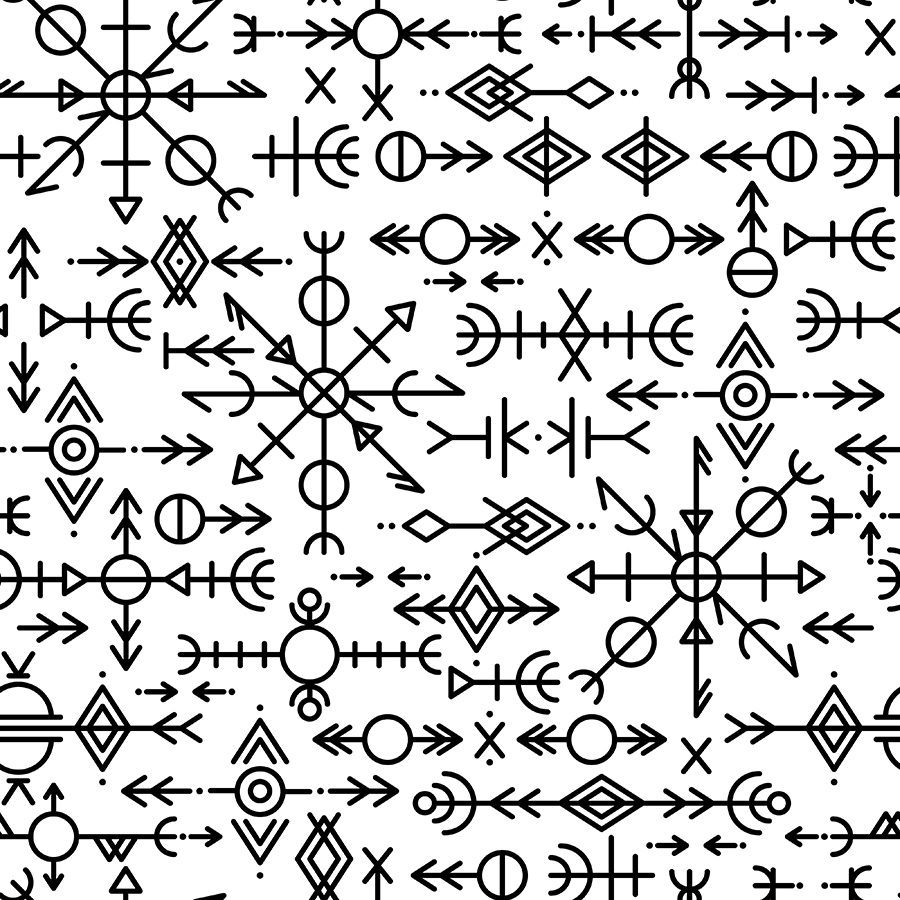
1. Reflecting on Personal Meaning
Before deciding on a design, take time to reflect on the values or themes that are important to you. Do you connect with the idea of protection and strength? Are you seeking a tattoo that represents growth and wisdom? By choosing a symbol that aligns with your personal values, you can ensure that your tattoo will hold lasting significance.
2. Placement Ideas for Nordic Tattoos
Placement plays an important role in how your tattoo is perceived and how it ages over time. Some popular placements for Nordic tattoos include:
• Forearm: A great canvas for detailed designs like Yggdrasil or a series of runes.
• Back: Ideal for larger, more intricate designs like full mythological scenes.
• Chest: A meaningful spot for personal symbols like Thor’s Hammer or the Valknut, close to the heart.
• Shoulders and Arms: Excellent for smaller, bold symbols like runes or animal art.
3. Consulting with Your Tattoo Artist
Your tattoo artist can be an invaluable resource when it comes to designing a custom Nordic tattoo. They can help you decide on size, placement, and style, and even suggest unique ways to incorporate multiple symbols into one cohesive design. Be sure to bring reference images and ideas to your consultation so your artist can get a clear sense of your vision.
I have 20 years experience of working with nordic art, contact me to arrange a consultation to discuss your ideas. I will work with you to customize the design, ensuring that it reflects your personal story and the symbolism you want to convey. Don’t be afraid to ask for modifications to make the tattoo uniquely yours.
Portfolio Review
Always review the artist’s portfolio of nordic tattoos (you can see mine here) to get a sense of their style and experience with Nordic designs. Look for clean, sharp lines, well-executed lettering, and attention to detail. A good portfolio will give you confidence in the artist’s ability to bring your vision to life.
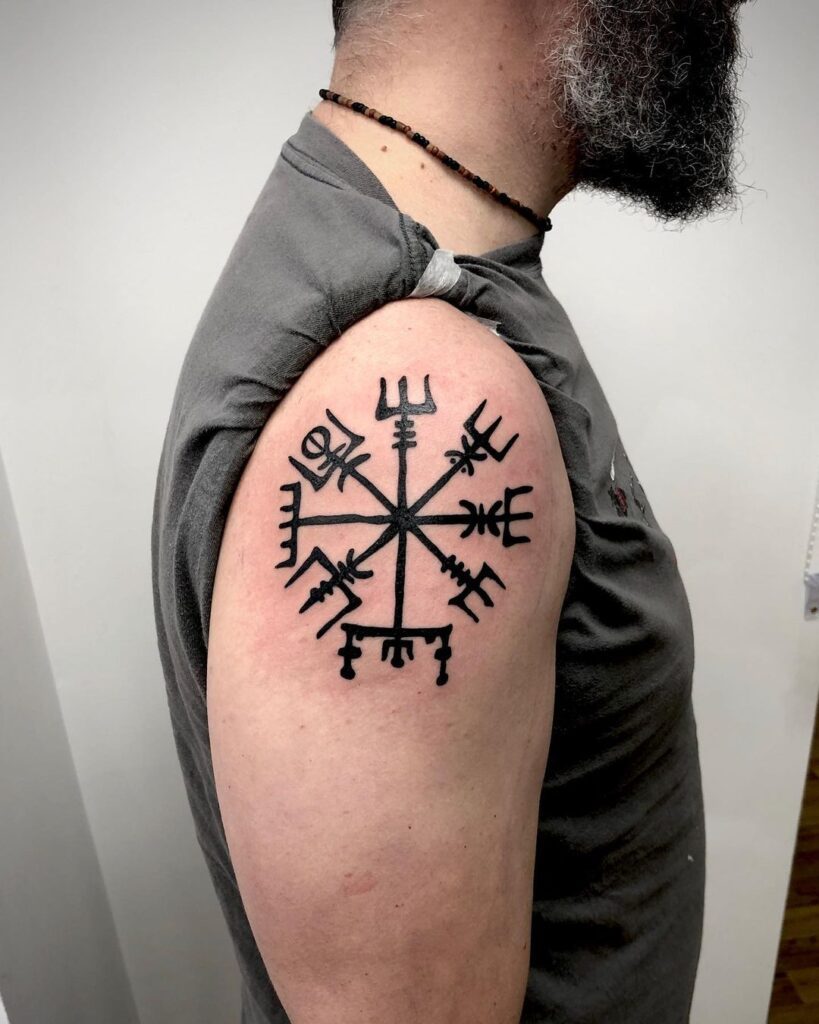
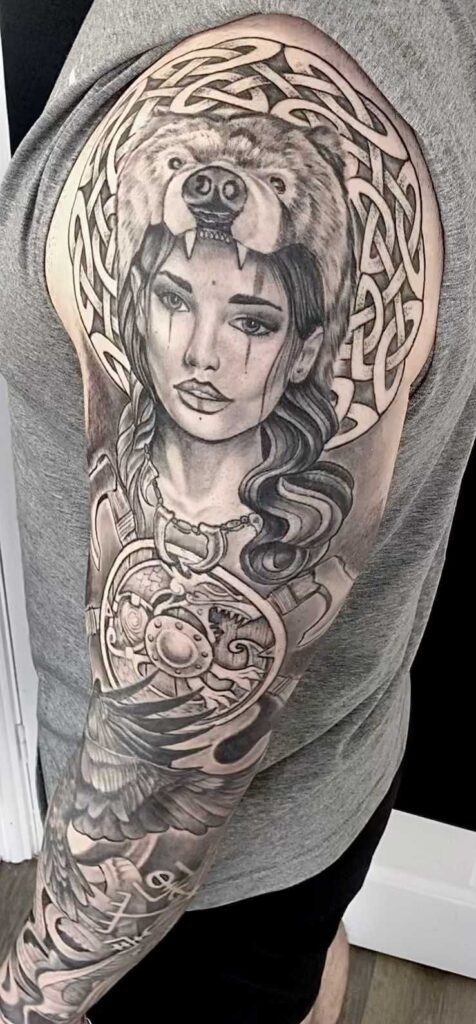
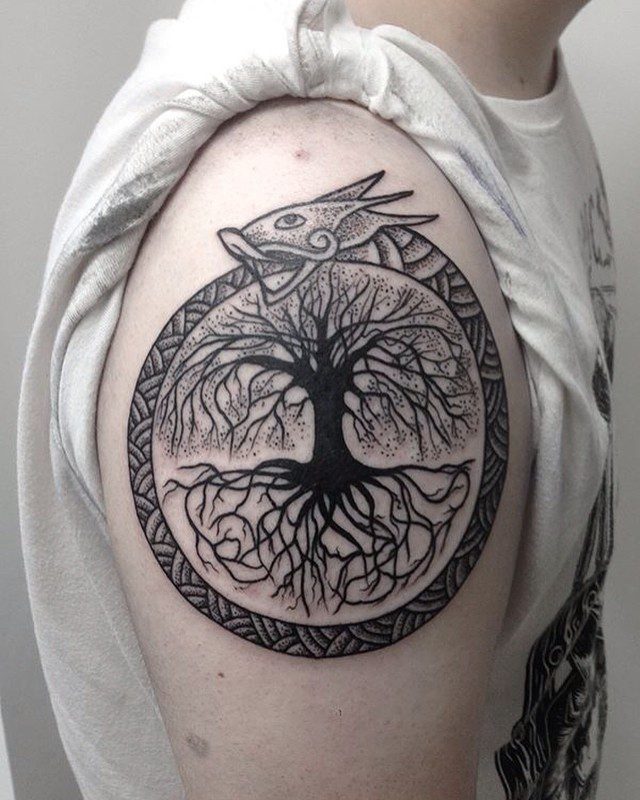
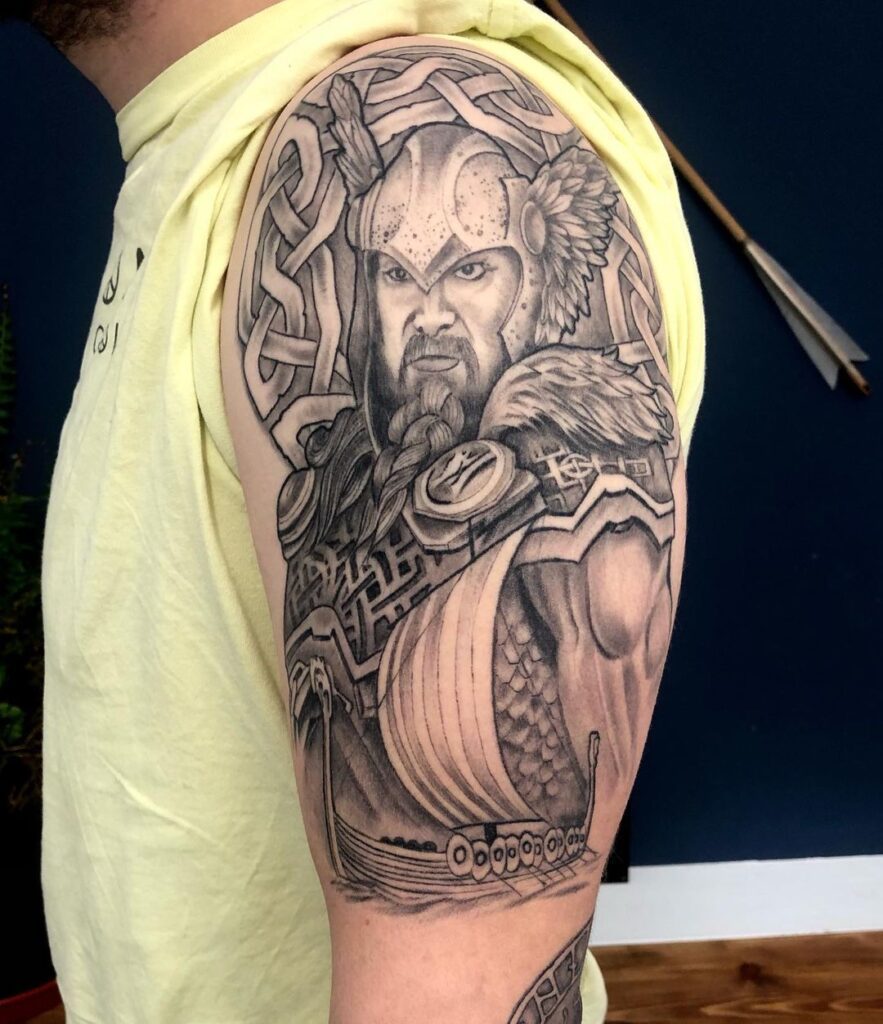
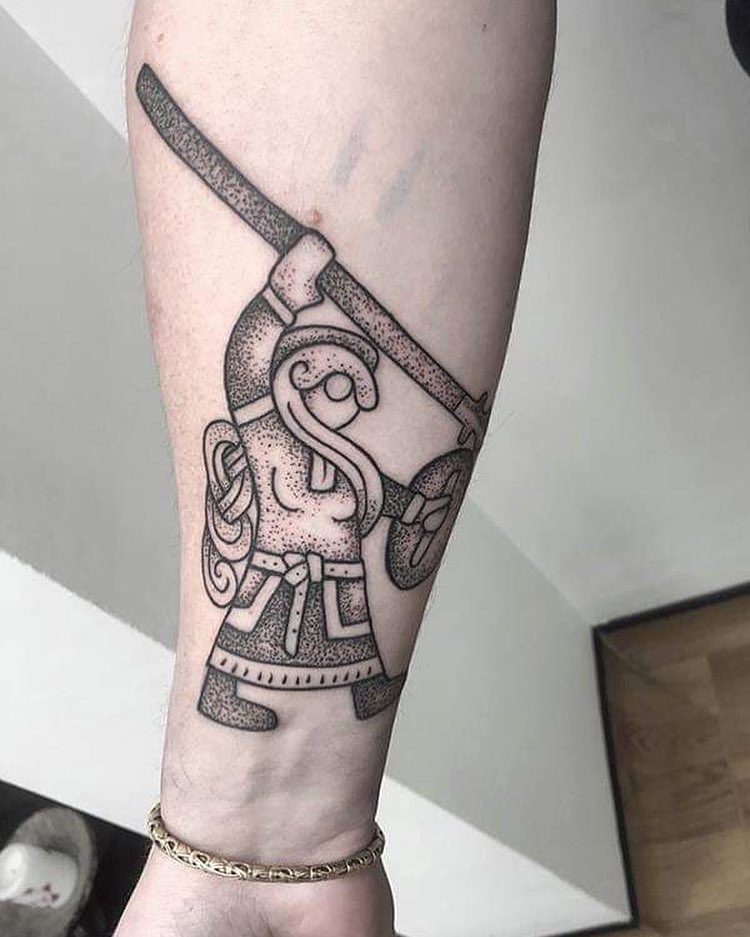
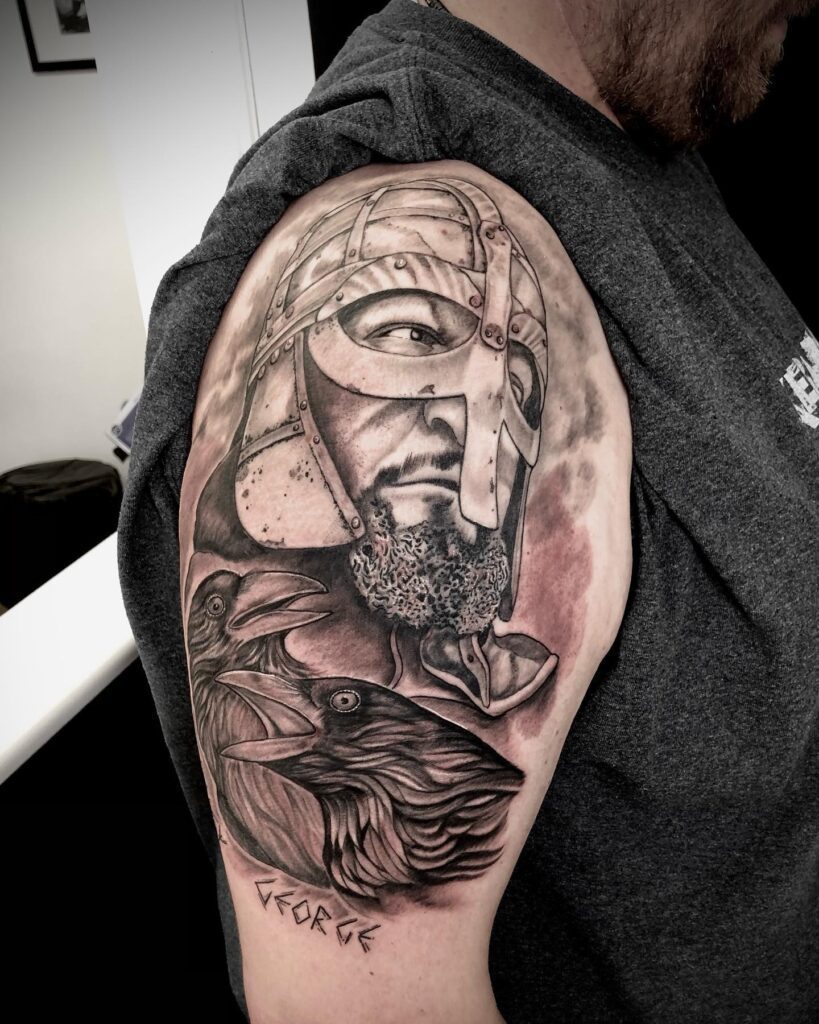
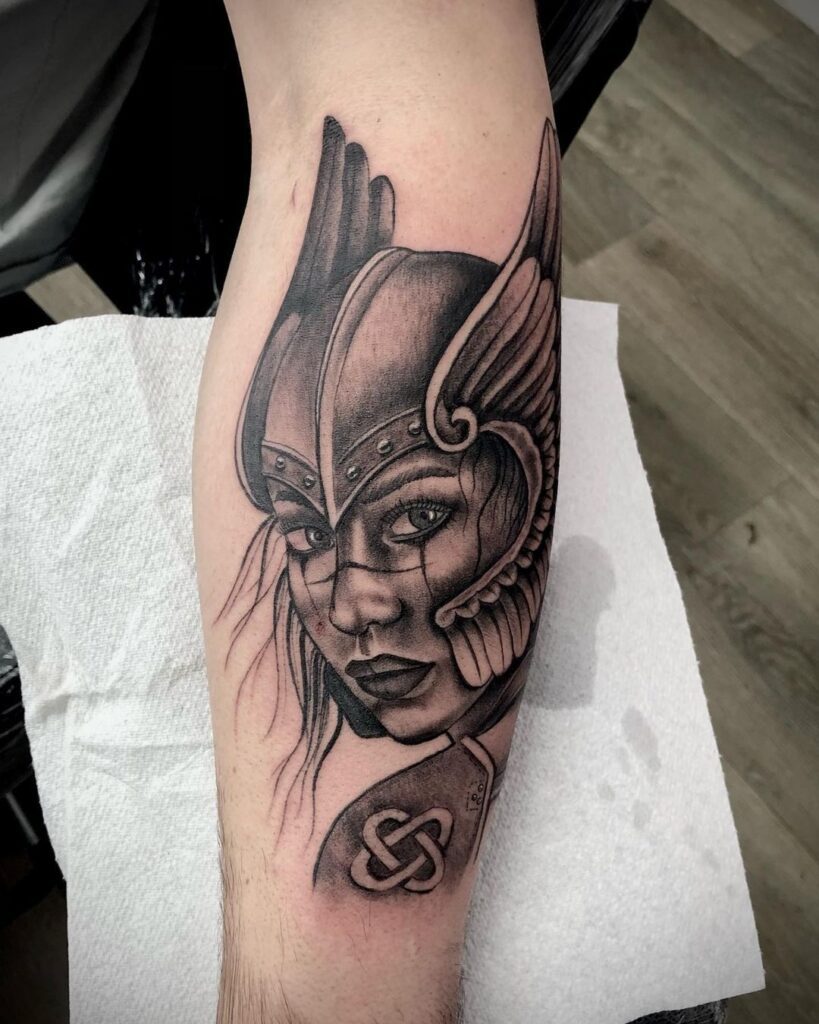
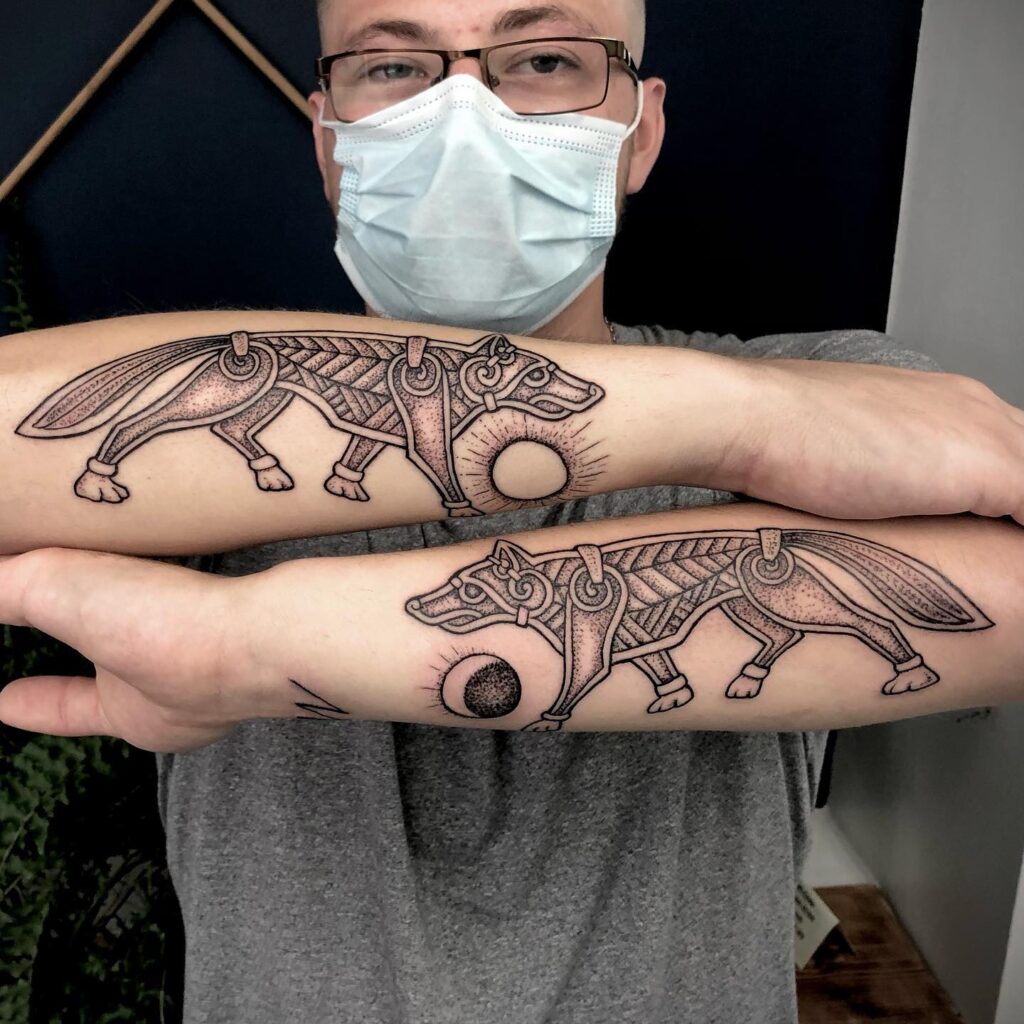
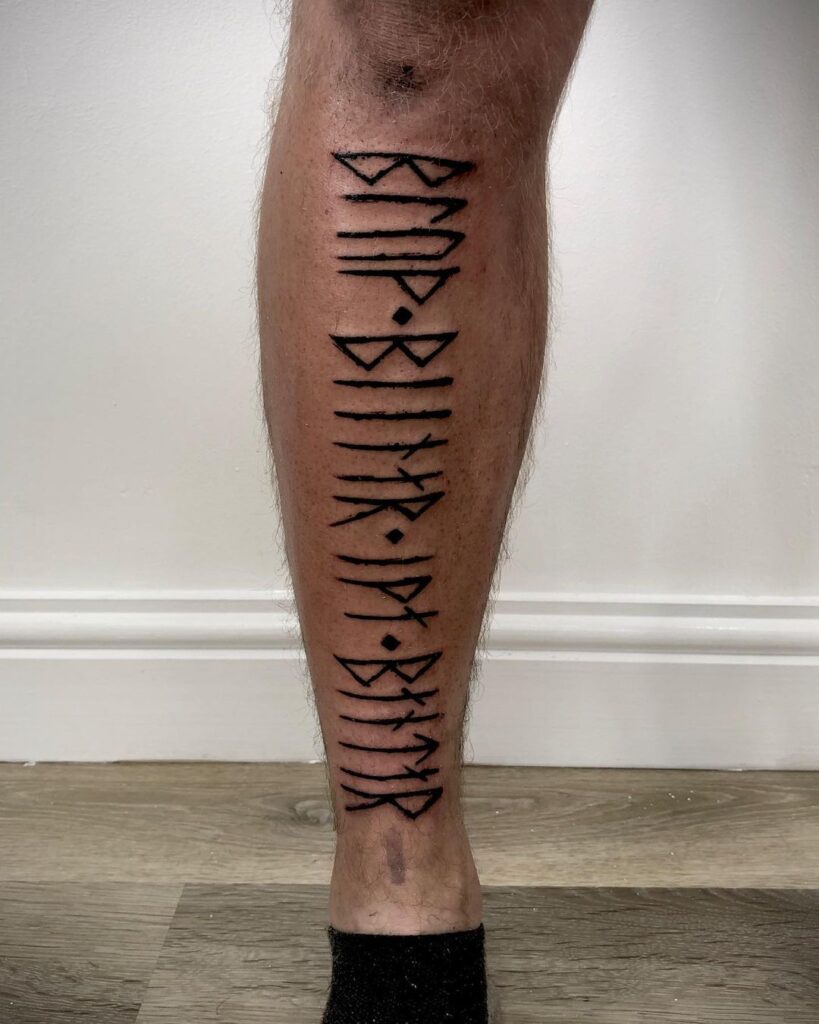
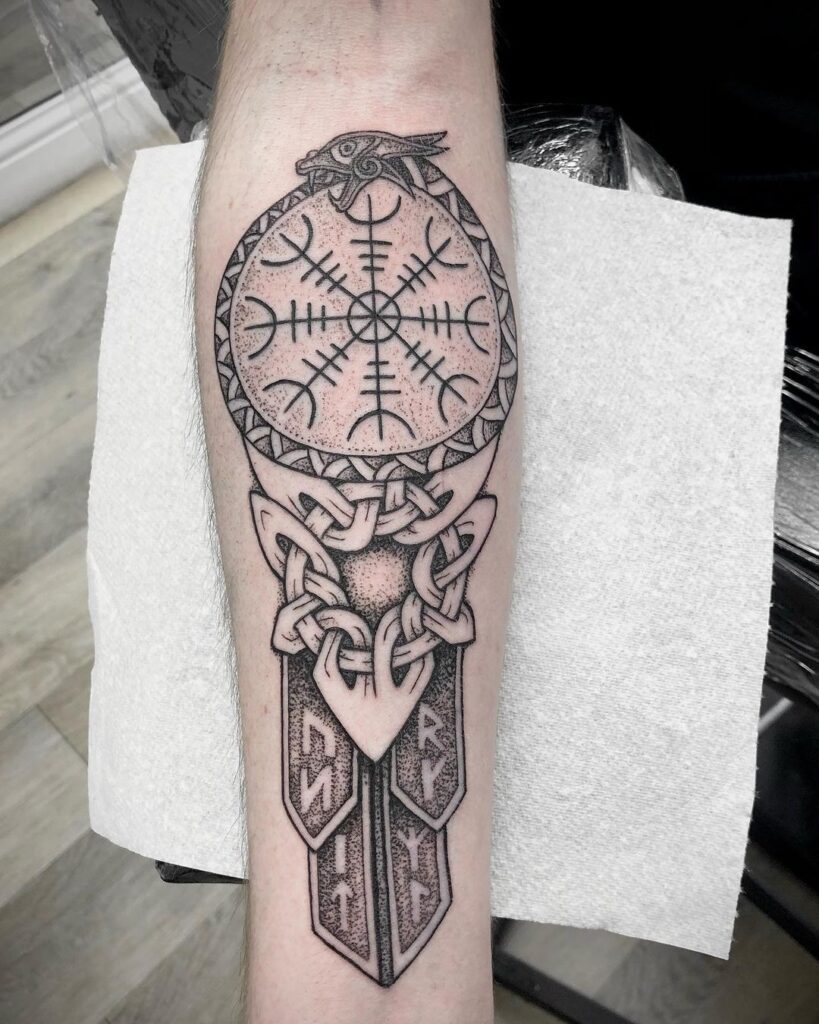
4. Color vs. Black-and-Gray Tattoos
While traditional Viking art is typically done in black and gray, some people choose to incorporate color into their Nordic tattoos. Subtle earth tones like green, blue, and gold can complement the designs, especially when representing nature or mythological scenes. However, if you want to stay true to historical representations, black and gray may be the best choice.
Tattoo Care and Longevity for Nordic Art
Once you’ve decided on your tattoo and had the design inked, proper care is essential to ensure that your tattoo heals well and maintains its beauty for years to come.
1. Pre-Tattoo Preparation
• Make sure to stay hydrated and get a good night’s sleep before your tattoo session.
• Eat a balanced meal to keep your blood sugar stable, as long sessions can be physically demanding.
2. Aftercare Tips
• Your tattoo artist will likely provide specific aftercare instructions, but it’s important to keep the tattoo clean and moisturized during the healing process.
• Avoid direct sunlight, swimming pools, and heavy exercise during the healing phase to prevent infection and fading.
• Use fragrance-free moisturizers to keep the skin hydrated as it heals.
3. Long-Term Care
• Protect your tattoo from the sun by applying SPF regularly, as UV rays can cause fading over time.
• Stay hydrated and keep your skin healthy to maintain the vibrancy and clarity of your tattoo.
Ready to Get Started on Your New Nordic Tattoo Design?
Nordic art tattoos offer more than just striking visuals—they are a powerful way to connect with the ancient traditions of the Norse people while expressing personal values and beliefs. Whether you’re drawn to the protective power of Thor’s Hammer, the interconnected wisdom of Yggdrasil, or the mystical energy of runes, these designs can be a lasting symbol of your journey through life.
As you embark on your tattoo journey, remember that the best tattoos are those that resonate deeply with who you are. Take time to explore the rich history of Nordic symbols, consult with an experienced tattoo artist, and choose a design that aligns with your personal story. Whether you’re honoring your heritage or simply captivated by the beauty of Nordic art, your tattoo will serve as a timeless reminder of strength, wisdom, and connection.
Nordic Tattoo Frequently Asked Questions
1. What is the most popular Nordic symbol for tattoos?
Mjölnir (Thor’s Hammer) is one of the most popular symbols, representing protection and strength. However, runes and Yggdrasil (the Tree of Life) are also common choices for their deep symbolic meanings.
2. Can I combine different runes into one tattoo?
Yes, combining different runes into a single tattoo design is quite common. Each rune carries its own meaning, and by combining them, you can create a personalized design that represents multiple aspects of your values or life journey.
3. Are Nordic tattoos painful?
Like all tattoos, the level of pain varies depending on the placement and size of the design. Areas with more bone or thinner skin, like the ribs or hands, tend to be more painful, while areas with more muscle or fat, such as the upper arm or thigh, are generally less painful.
4. Do Nordic tattoos always have to be black and gray?
Traditionally, Viking and Nordic art is depicted in black and gray, but there’s no hard rule. Many modern interpretations of Nordic tattoos incorporate color, especially in mythological scenes or nature-based designs like Yggdrasil.
5. What should I discuss with my tattoo artist before getting a Nordic tattoo?
It’s essential to discuss the symbolism behind the design, the size, and placement with your tattoo artist. You should also bring reference images and explain the meaning you wish to convey through your tattoo, ensuring that the design resonates with your vision.
Exploring Nordic art as the inspiration for your next tattoo is an exciting journey that combines rich historical traditions with personal expression. The versatility of Nordic symbols allows for designs that are both aesthetically pleasing and deeply meaningful. From the strength of Thor’s Hammer to the wisdom of the Tree of Life, a Nordic tattoo can be a timeless piece of art that you carry with you for the rest of your life.
Whether you opt for a simple rune or an intricate, full-body design, the key is to choose something that holds meaning for you and reflects the values, beliefs, and experiences that shape who you are. Embrace the legacy of Nordic art, and let it tell your story in ink.
I hope this article helped you understand the history, symbolism, and practical considerations of getting a Nordic tattoo. If you have any specific image requests for other sections, feel free to get in touch!
